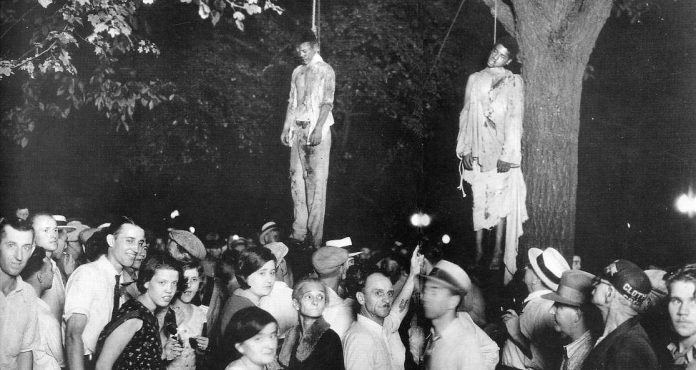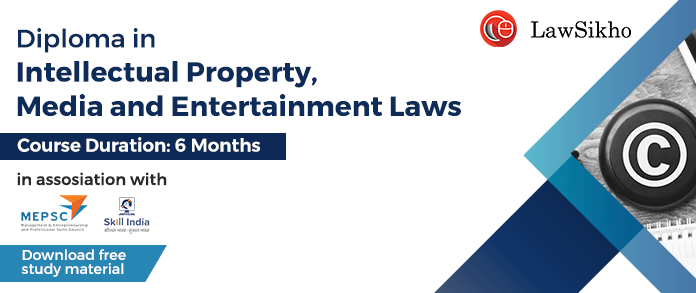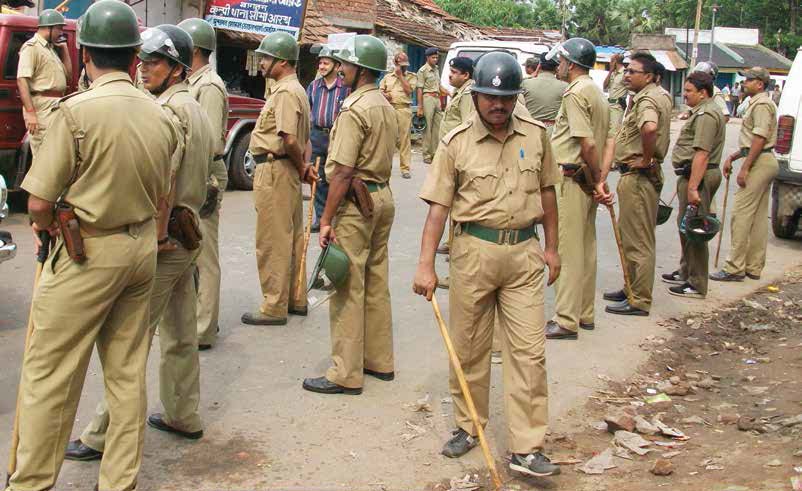This article has been written by Vivek Ranjan pursuing Diploma in Advanced Contract Drafting, Negotiation and Dispute Resolution and edited by Shashwat Kaushik.
This article has been published by Sneha Mahawar.
Table of Contents
Introduction
Mob lynching is a gruesome act that involves a group of people who take the law into their own hands to punish a suspected perpetrator. Those who commits this condemnable act often believe in rumours spread by conservative people, which is usually based on religion, caste, etc. This horrendous act posed a grave threat to the state of law and order, human rights, and social solidarity. In this article, the writer wants to discuss the causes and consequences of mob lynching in India, the legal mechanisms developed by the states and the guidelines given by the Supreme Court with reference to important case laws and prevailing challenges and solutions.
Causes of mob lynching in India
The causes of mob lynching incidents in India depend on various aspects, including but not limited to:
- Rumors- Information related to sensitive issues like child abduction, cattle theft, religion, and caste hatred, which is usually spread through social-media often by fake accounts, fueled the mob to take the law into their own hands against the perpetrator who was wrongfully accused of crimes.
- Social division- India is a diverse country where people of different religions, caste and cultures reside. These divisions led to the practise of different cultures and even a slight misinformation led people to resort to violence against marginalised sections.
- Distrust in the legal system- The famous quote “justice delayed, justice denied,” which means lengthy investigation and court proceedings, develops a lack of trust in the police and the judicial system, which often leads some individuals to take the law into their own hands on the perception that they will not get justice through the prevailing legal mechanism.
- Political vendetta- Certain political parties, to fulfil their rivalries or for the vote bank, use the tactics of incitement through a series of provoking speeches and create bitter or feudal tendencies among groups of people based on religion and caste.
Impact of mob lynching in India
The mob lynching incidents are not limited to victims; they affect society as a whole. It shows a lack of conscience in certain people in India, which is deeply heart-wrenching. Some of the major impacts are:
- Disrupts unity in diversity- India claims to be the country with the motto “unity in diversity,” where different religions, castes, and cultures can reside peacefully. Cases of mob lynching show a lack of unity in diversity. This shows a lack of conscience in the group of people who participated, even those who supported these mobs.
- Fear environment- The rise in mob lynching cases creates an environment of fear, especially among minorities. According to the Indian Spend analysis, in 2020, India reported 22 incidents of mob lynching, resulting in 22 deaths.
- Loss of human life- There is also a famous quote “justice hurried, justice buried”. It is said that life is the “gift of god” and should be handled with care and the cases of mob lynching act as a dagger to such a precious gift because they are based on rumours.
- Infringes rule of law- Article 21 in the Constitution of India provides “the protection of life and personal liberty of an individual”. The mob lynching cases infringe on the rights of individuals and undermine the rule of law and justice. Also, such acts bypass the legal principle of “innocent until proven guilty”.
Case-studies
Pehlu Khan lynching case (2017): Pehlu Khan (55-year old), a dairy farmer, and his son had purchased cows at a cattle fair in Alwar, Rajasthan. While they were transporting cows, they were beaten by cow-vigilantes which led to Pehlu Khan’s death after he succumbed to injuries in a hospital. In August 2019, the Sessions Court acquitted the accused due to a lack of evidence and a lapse in the police investigation. These kinds of decisions develop a lack of trust in law enforcement agencies.
Palghar Lynching Case (2020): On April 16, 2020, a WhatsApp rumour spread that thieves were roaming in Gadchinchale Village, Palghar District, Maharashtra, India. The mob groups, under such pretext, captured the three people—two sadhus and one driver—and killed them.
G.Krishnaiah (IAS Officer) lynching case: On December 5, 1994, a mob of 5,000 people charged towards the vehicle of Gopalganj District Magistrate G. Krishaniah pulled him out of his car. The mob hit him, causing multiple injuries and, lastly, shot a bullet in his head.
Legal mechanism in India against mob lynching
There is no specific mechanism in India against the perpetrators of mob lynching but the person who are involved in such horrendous act will be dealt according to the various provisions and guidelines-
The Indian Penal Code, 1860
Indian Penal Code – Several sections of the IPC can be assailed against the perpetrators in cases of mob lynching:
Section 302 (Murder), Section 307 (Attempt to murder), and Section 323 (Voluntary causing hurt) can be invoked in cases of mob lynching leading to death or injury.
Section 153A (Promoting enmity between different groups on grounds of religion, race, caste, place of birth, etc.) and Section 295A (Defining a place of worship with intent to insult the religion of any class) can be invoked against the perpetrators who provoke or incite to outrage the communal tensions.
Section 34 (Act done by several people in furtherance of common intention); (Unlawful Assembly); Section 142 (Being member of unlawful assembly); Section 143 (Punishment); Section 144 (Joining unlawful assembly armed with deadly weapon); Section 146 (Rioting); Section 147 (Punishment for rioting); Section 148 (Rioting, armed with deadly weapon); Section 149 (Every member of unlawful assembly guilty of offence committed in prosecution of common object).
The Code of Criminal Procedure, 1973
The Code of Criminal Procedure, 1973 (CrPC) provides preventive action by the police to maintain law and order, wherein Section 149 (Police to prevent cognizable offences); Section 150 (Information of design to commit cognizable offences); and Section 154 (Arrest to prevent the commission of cognizable offences) CrPC also provides, under Section 154, the police officer’s power to investigate in cases of cognizable offence.
Supreme Court guidelines against mob lynching incidents.
The Supreme Court issued comprehensive guidelines in 2018 due to the increase in mob lynching cases to all states/UTs for adopting effective measures to prevent and curb such incidents. The guidelines are as follows:
- The state governments shall designate a senior police officer, not below the rank of superintendent of police, as a nodal officer in each district. Such nodal officer shall be assisted by one of the DSP rank officers in the district in taking measures to prevent incidents of mob violence and lynching. They shall constitute a special task force so as to procure intelligence reports about the people who are likely to commit such crimes or who are involved in hate speeches, provocative statements and fake news.
- The state governments shall forthwith identify districts, Sub-divisions and villages where instances of mob lynching have been reported in the recent past.
- The Secretary, Home Department, of the concerned states shall issue directives/advisories to the nodal officers of the concerned districts for ensuring that the officer in charge of the police station is extra-cautious in their respective jurisdiction.
- The designated Nodal officer shall hold regular meetings (at least once a month) with the local intelligence units in the district along with all station house officers of the district to take preventive measures against any dissemination of information that might incite mob violence.
- Under Section 129 of CrPC, it shall be the duty of police officer not below the rank of sub-inspector to disperse any unlawful assembly or any assembly of five or more persons who are likely to cause disturbance of public peace or are likely to create havoc through lynching.
- The Director General of Police shall issue a circular to the Superintendents of Police with regard to police patrolling in those areas where incidents have been reported in the past.
- The state governments shall conduct a public awareness campaign on radio, television and other media platforms, including the official websites of the Home Department and police of the states, about the impact of lynching and violations of rule of law.
- All law enforcement agencies of the concerned states shall monitor the social media platform and shall take action according to Information Technology Act, 2000 and other relevant laws to curb and stop dissemination of information that is likely to outrage mob violence and lynching.
- If any incidents of lynching took place, then the jurisdictional police station shall immediately lodge an FIR without any delay under the relevant provisions of IPC or other provisions of law and further intimate to nodal officer in the district, who shall, in return, ensure that there is no further harassment of the family members of the victim(s).
- The state governments shall prepare a victim compensation scheme in light of the provisions of Section 357A of CrPC.
- If the concerned state governments or police officers fail to comply with the guidelines given by the Supreme Court in order to prevent or facilitate expeditious trial of any crime of mob lynching, the same shall be considered as an act of deliberate negligence and misconduct for which appropriate action must be taken against him
Challenges and solutions
Lack of education and awareness- In India, many religious conservatives teach hatred about each other’s religion, which is instilled in the minds of people, especially those who have been with them since early childhood.
- The Central and state governments should monitor those agencies that create a milieu of hatred and try to curb such teachings. They should launch awareness campaigns promptly.
- The Preamble of the Indian Constitution strives towards promoting fraternity among individuals. Recently, the Karnataka government has made it mandatory for students and teachers in all educational institutions in the state to read aloud the preamble of the Constitution of India during morning assembly and also take an oath to adopt the principles enshrined in the document in their daily lives. “The reading has been made compulsory to make children aware of the objectives of the Indian Constitution.” 2
Strengthening legal mechanisms- The existing legal mechanism is not specific to mob lynching, which hinders a speedy trial. The existing laws, such as the Indian Penal Code, 1860, and the Code of Criminal Procedure, 1973, lead to the longevity of cases. Also, prosecuting those who are involved in mob lynching remains a challenge due to various reasons, such as threats to witnesses, influence of political groups, difficulties in collecting evidence, etc.
- There have been instances where law enforcement agencies have not followed the guidelines given by the Supreme Court in 2018 due to political pressure or communal bias. There have been cases where the police have not registered FIRs, delayed the proper investigation, and fabricated evidence. Also, there have been instances where the court has granted bail to the perpetrators of mob lynching. For example, in the G. Krishnaiah case, the main accused, Anand Mohan Singh, has been released by the Patna High Court due to an amendment in Prison Manual by the Bihar State Government. It shows political influence to release such goons to fulfil their political vendetta.
- The state governments should make provisions that provide speedy trials, protection, and compensation to victims. They should conduct mock drills of police officers to handle such situations. They should teach the police authorities about the values of the Constitution so they can register FIRs and lawfully conduct investigations.
- Many state governments have made laws to curb such horrendous acts, such as in Rajasthan, Manipur, and West Bengal, and provide stringent punishment. Other state governments should take lessons and prepare specific laws to curb such menace.
Media responsibility- The media personnel should provide genuine news to the general public. It is said that the media is the fourth pillar of democracy and if the media is spreading false news and rumours for the sake of the Television Rating Programme (TRP), then it hampers democracy in India.
- The media should not be influenced by political parties and telecast the truth without bias or prejudice. The state government should create awareness programmes through the media and also make laws for the protection of media personnel.
Information technology law- There are certain social media platforms, such as Facebook and WhatsApp, that are being used by conservatives to provoke mob lynching. For example, in the Palghar lynching case, there was a rumour that some thieves had entered the village and on the pretext of that, two Sadhus and one driver were killed by the mob.
- The Information Technology Act, 2000 and its amendments have made proper guidelines to monitor and check these social media platforms, but despite such laws, there is an incident like Palghar. Hence, the state government should make a pact with such platforms to track perpetrators who are responsible for spreading fake information, whereby they will get punishment for influencing such horrendous acts.
Conclusion
Mob lynching in India is a grave issue that threatens the democratic values of Indian society, disrupts objectives of Preamble of Indian Constitution, undermines the rule of law, Social solidarity, etc. Such incidents create an atmosphere of fear, especially among minorities. There are legal mechanisms to combat such menaces, but the absence of specific laws leads to the longevity of cases. Existing guidelines of the Supreme Court have not been properly implemented, for example, in the Palghar Lynching case, where proper investigation has not been done, and in the G. Krishaniah case, the release of the main accused. These kinds of cases erode trust in law enforcement agencies, which is not good for developing countries like India. It may show India’s lack of credibility in its justice delivery system to victims and their family members. There is a famous quote “Those who do not learn from the past will repeat itself”. If India wants to uphold its commitment to justice, human rights and the rule of law, then it must focus on strengthening education and social awareness, instilling conscience, and strengthening legal mechanisms.
References
- https://www.mha.gov.in/sites/default/files/lynching_240720181010%20.pdf
- https://timesofindia.indiatimes.com/city/bengaluru/reading-preamble-a-must-in-karnataka-schools/articleshow/103700682.cms?from=mdr
- https://indianexpress.com/article/india/lynching-and-hate-crime-murder-in-penal-code-punishment-7-yrs-to-death-8888623/
- https://blog.finology.in/Legal-news/mob-lynching
- https://www.aljazeera.com/news/2023/9/28/muslim-man-lynched-in-india-for-taking-a-banana-at-hindu-temple-event
Students of Lawsikho courses regularly produce writing assignments and work on practical exercises as a part of their coursework and develop themselves in real-life practical skills.
LawSikho has created a telegram group for exchanging legal knowledge, referrals, and various opportunities. You can click on this link and join:
Follow us on Instagram and subscribe to our YouTube channel for more amazing legal content.
 Serato DJ Crack 2025Serato DJ PRO Crack
Serato DJ Crack 2025Serato DJ PRO Crack











 Allow notifications
Allow notifications



